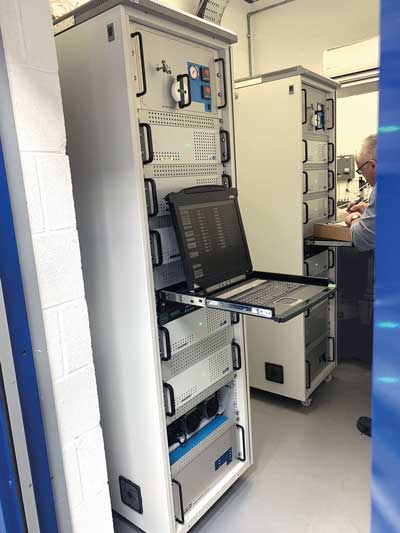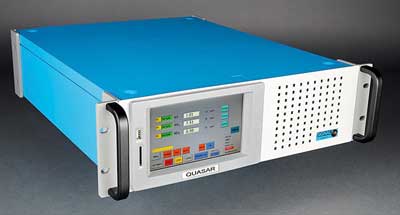Oxides of nitrogen are serious air pollutants and emissions are increasingly tightly regulated. James Clements, managing director of UK analyser manufacturer Signal Group, explains the various methods of detecting them.

Nitrogen and oxygen do not react at ambient temperature, but in the heat of combustion, such as in the engine of a car or truck or in an industrial process or furnace, the two gases react to form nitric oxide (NO) and nitrogen dioxide (NO2). These gases (collectively known as NOx) affect human health and the environment.
Nitrogen dioxide gas is a major ambient air pollutant, responsible for large numbers of premature deaths, particularly in urban locations where vehicular emissions accumulate. NO2 also contributes to global warming and in certain circumstances can cause acid rain. Regulations therefore limit NOx emissions from combustion sources ranging from domestic wood burners to cars, and from industrial furnaces and generators to power stations. Developers of engines and furnaces pay great attention to the NOx emissions of their designs, and operators of this equipment are generally required to undertake emissions monitoring to demonstrate regulatory compliance.
The role of monitoring in NOx reduction

NOx emissions can be lowered by reducing residence time and peak temperature in the combustion chamber, by chemical reduction and by lower nitrogen in feedstocks (although nitrogen is always present in the combustion air). These methods often involve extra cost or lower combustion efficiency, so NOx measurements are essential if engine or boiler efficiency is to be optimised. Secondary NOx reduction measures such as chemical reduction (an example being selective catalytic reduction, commonly used in motor vehicles) or sorption also require accurate emissions monitoring.
Choosing a NOx analyser
The main methods employed for the measurement of NOx are infrared, chemiluminescence and electrochemical.
Infrared analysers measure the absorption of an infrared light source through a gas sample. In Signal’s Pulsar range, Gas Filter Correlation technology allows the measurement of just the gas or gases of interest, with negligible interference from other gases and water vapour.
Electrochemical sensors are low cost and generally offer lower levels of performance. Users should also be aware of potential cross-sensitivities, as well as calibration requirements and limited sensor life.
The chemiluminescence detector (CLD) method of measuring nitrogen oxide is based on the use of a controlled amount of ozone (O3) coming into contact with the sample containing NO. NO is oxidised by the ozone to nitrogen dioxide, and photons released by the reaction are measured. Chemiluminescence only occurs with NO, so in order to measure NO2 it is necessary first to convert it to NO. After the NO component of a gas has been measured, NO2 is converted to NO by a catalytic converter upstream of the analyser and a second reading is taken to determine NOx.
For regulatory monitoring, NO2 is generally the parameter required to be measured, but for combustion research and development NOx is commonly measured. Consequently, CLD is the preferred measurement method for applications such as the development and manufacture of gas turbines, large stationary diesel engines, large combustion plant process boilers, domestic gas water heaters and gas fired factory space heaters, as well as combustion research, catalyst efficiency measurement, NOx reduction, bus engine retrofits, selective catalytic reduction development in trucks and any other manufactured product which burns fossil fuels.
These applications require greater accuracy than regulatory compliance: savings in the choice of analyser are negligible in comparison with the market benefits of developing engines and furnaces with lower emissions and superior efficiency.

Signal Group manufactures both NDIR and CLD analysers, but has recently launched the new Quasar CLD gas analysers for the continuous measurement of NOx, nitric oxide, nitrogen dioxide or ammonia. The Quasar instruments exploit the advantages of heated vacuum chemiluminescence, offering higher sensitivity and a heated reaction chamber that facilitates the processing of hot, wet sample gases without condensation.
Signal’s vacuum technology improves the signal-to-noise ratio, and a fast response time makes it ideal for real-time reporting applications. However, a non-vacuum version is available for trace NOx measurements, such as on-board testing of real-world driving emissions, for which a 24V DC version is available.
A key feature of the Series IV instruments is their communications flexibility, providing users with simple, secure access to their analysers at any time, from anywhere.
Further information: www.signal-group.com
Tel: +44 (0) 1276 682841 | sales@signal-group.com

